Normandy has not only been at the centre of France’s history for centuries but Europe’s too. It’s where William the Conqueror set sail for England from, and some of the most fearsome battles of World War Two took place on its beaches.
The landscapes are dotted with pretty towns such as seaside Honfleur, Rouen and its cathedral, and the extraordinary offshore monastery of Mont Saint Michel.
This charming region of northern France has some of the most evocative places in the country. In this post, we’ll take you to some of the most fascinating and beautiful castles in Normandy.
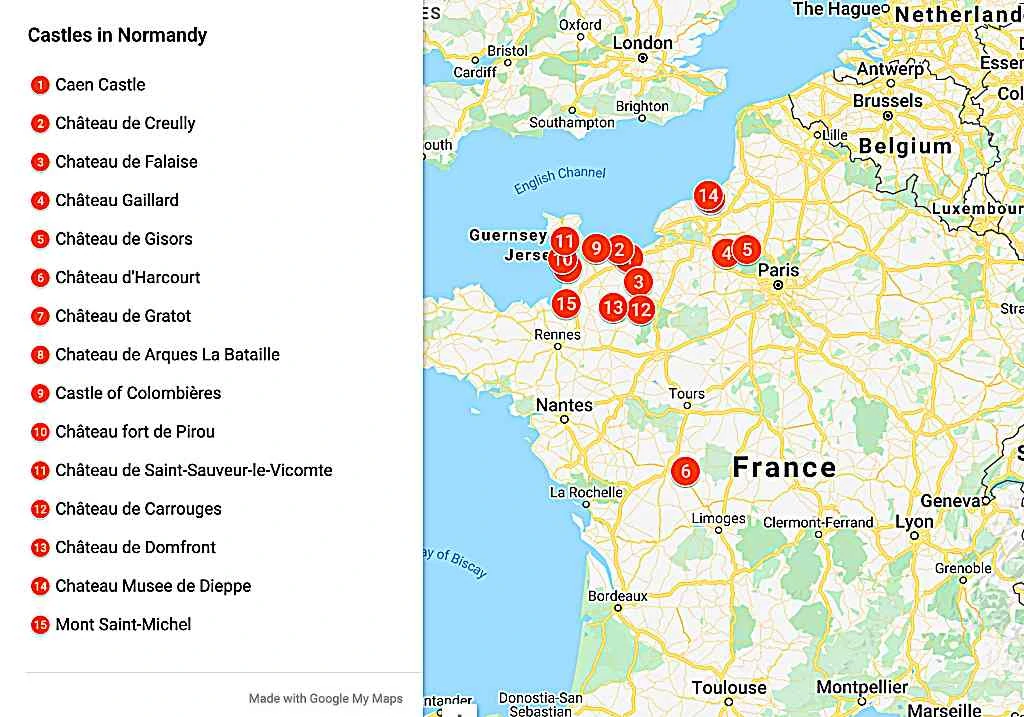
15 Castles to Visit in Normandy
1. Chateau de Caen
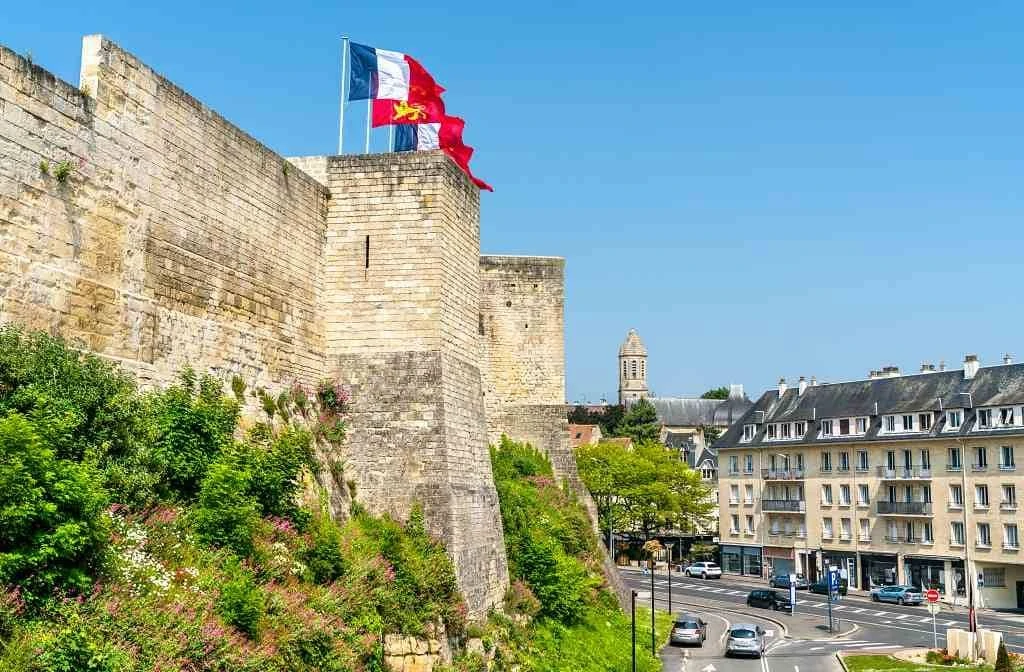
Built atop the fortress of William the Conqueror, Château de Caen is one of the largest medieval enclosure castles in Europe. It has been at the forefront of many battles over the years, with the English occupying it during the Hundred Years’ War.
From the castle, there are a number of impressive views of the city of Caen. There’s also a medieval medicinal garden and an underground area called the Rampart Rooms. Now, the castle is home to two of the most important museums in the region – the Museé de Normandie and the Museé des Beaux-Arts.
Where: Caen
When: 11th century
Open for Visit: Yes. check here for more information.
2. Chateau de Creully

This feudal castle was built over centuries, beginning in the medieval period. It’s located between the cities of Caen and Bayeux and consists of a medieval enclosure with vaulted rooms and a square tower.
A Renaissance turret was added later. The castle played an important role in the D-Day landings of the Allied Troops in Normandy, with the square tower becoming the headquarters of the BBC until 1944.
Where: Creully-Sur-Seulles
When: 11th – 15th century
Open for Visit: Yes. Check here for more information.
3. Chateau de Falaise
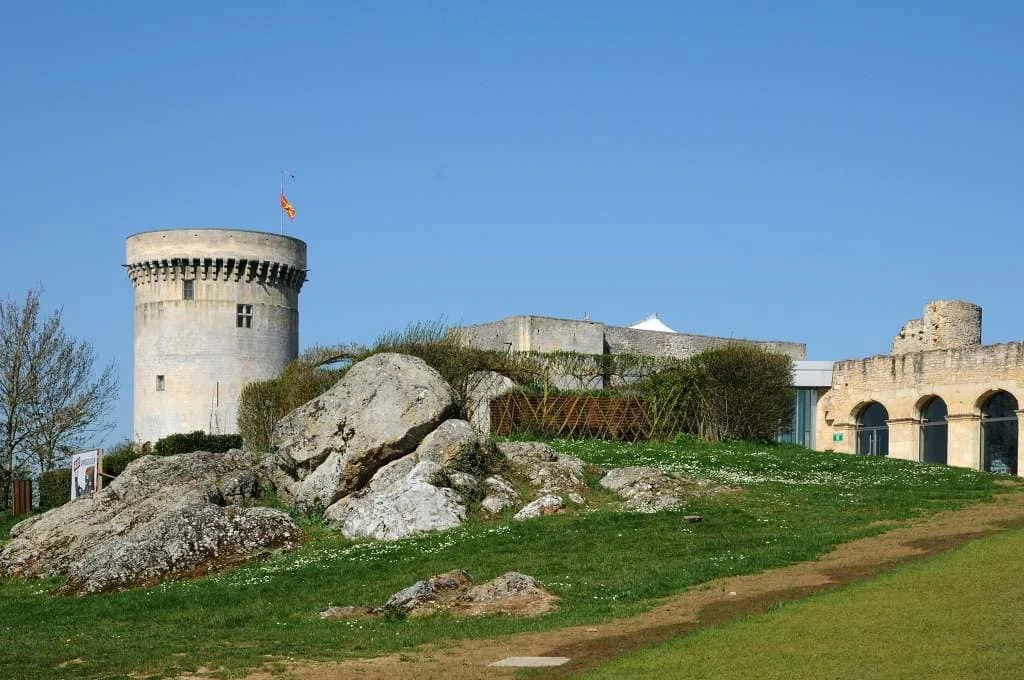
Also known as Château Guillaume le Conquerant (William the Conqueror’s castle), Falaise is the birthplace of the man who marched on the United Kingdom.
The original castle here was built by a Viking chieftain in the 10th century, but what you are able to see today is a couple of centuries newer than that. It is perched atop a rocky crag – falaise actually means cliff in French. The town of Falaise was badly damaged in the Second World War, but the castle is well maintained and preserved.
Where: Falaise
When: 12th – 13th century
Open for Visit: Yes. Check here for more information.
4. Chateau Gaillard
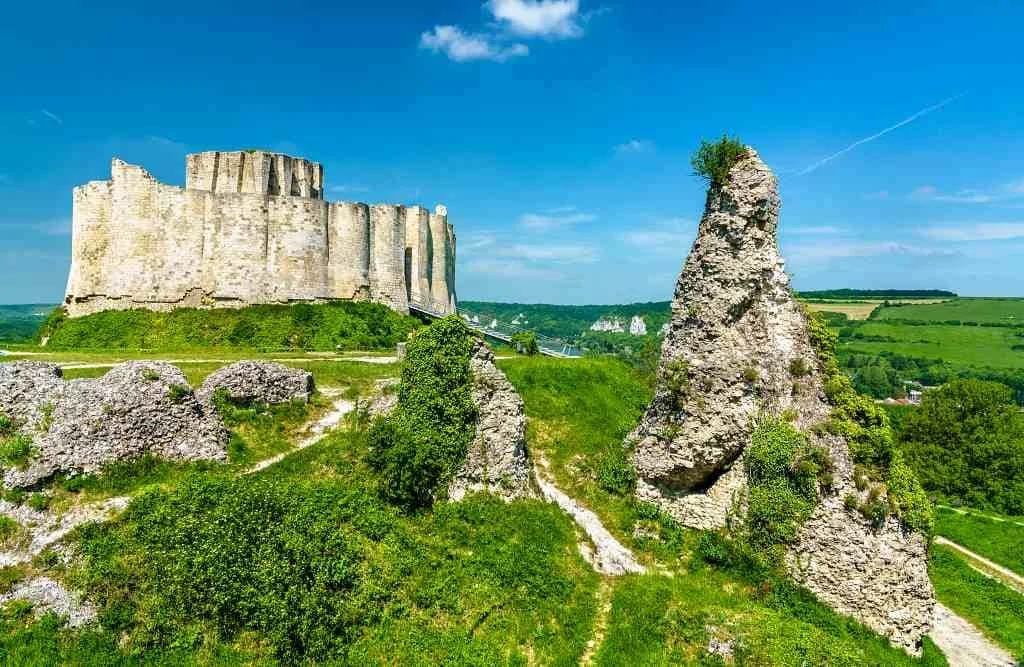
Perched on a cliff overlooking the Seine River, Château Gaillard is considered a medieval military masterpiece. Built by Richard the Lionheart in the 12th century in Les Andelys, it is one of the earliest examples of a concentric fortification.
A castle of this size would usually take around ten years to build, but this one took two. Despite that, the stronghold stood for centuries before Henry IV of France ordered its demolition in 1599. Nowadays, the castle is in a ruinous state, but it still has exquisite views of the Seine River and surrounding landscapes.
Where: Les Andelys
When: 12th century
Open for Visit: Yes. Check here for more information.
5. Chateau de Gisors
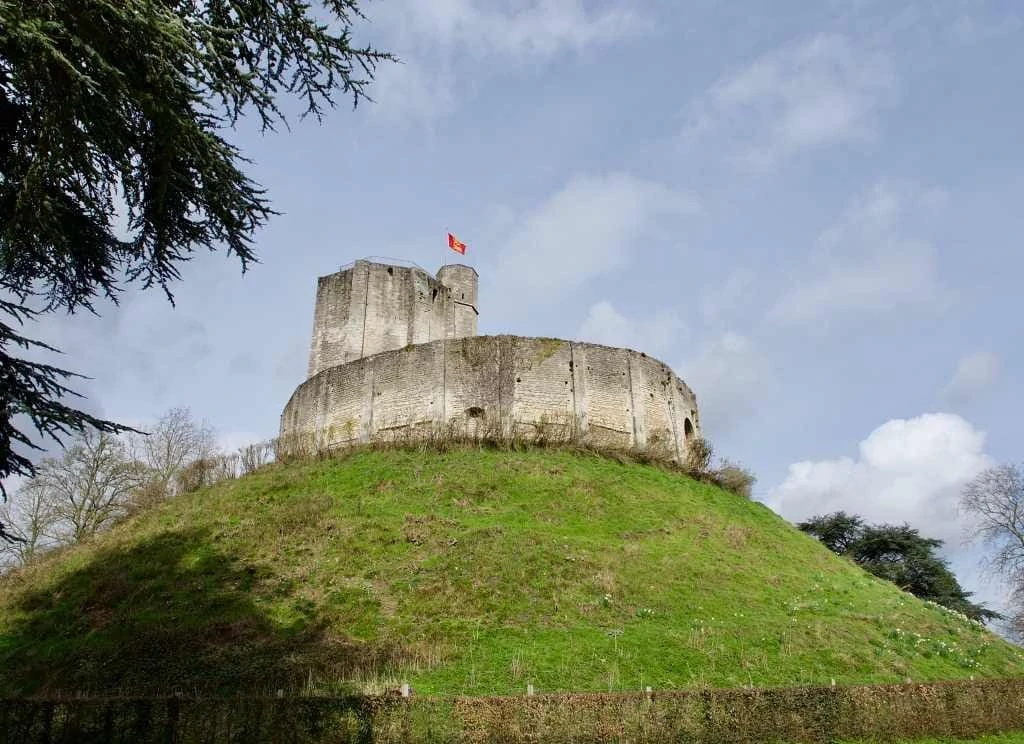
One of the most important fortresses for the Dukes of Normandy, Château de Gisors was built in the 11th century. Initially, it was a wooden keep upon a 15-metre motte, but it was reinforced in the following century with a circular stone curtain wall.
Local legend says that the castle is the hiding place of the treasures of the Knights Templar. In the middle of the 20th century, digging took place, but as yet, the treasure has not been found.
Where: Gisors
When: 11th century
Open for Visit: Yes. Check here for more information.
6. Chateau d’Harcourt
Château d’Harcourt is one of the best-preserved castles in France and is home to the oldest arboretum in the country. It is an excellent example of medieval architecture; however, it was remodelled in the 14th and 17th centuries.
The castle is surrounded by a large curtain wall and a double ditch, so it’s set up very well to defend against attacks. To learn more about the site, there is a permanent exhibition in the castle, while the arboretum is a lovely place for a walk; it was added to the castle in 1802.
Where: Chauvigny
When: 12th century
Open for Visit: Yes. Check here for more information.
7. Chateau de Gratot

This castle’s four towers that were built from the 13th to 18th centuries are safely surrounded by a large moat. Set among the fields of the Norman countryside, Château de Gratot is the home of a mesmerising legend.
Long ago, the Lord of Argouges supposedly spotted a young lady swimming in a refreshing forest pool. She happened to be a fairy. He was never to mention death in front of the fairy – who became his wife – and for years, all was well. However, when he finally did, she is said to have flown out of the window in one of the castle’s towers.
Where: Gratot
When: 14th century
Open for Visit: Yes, click here for more information.
8. Chateau d’Arques-la-Bataille
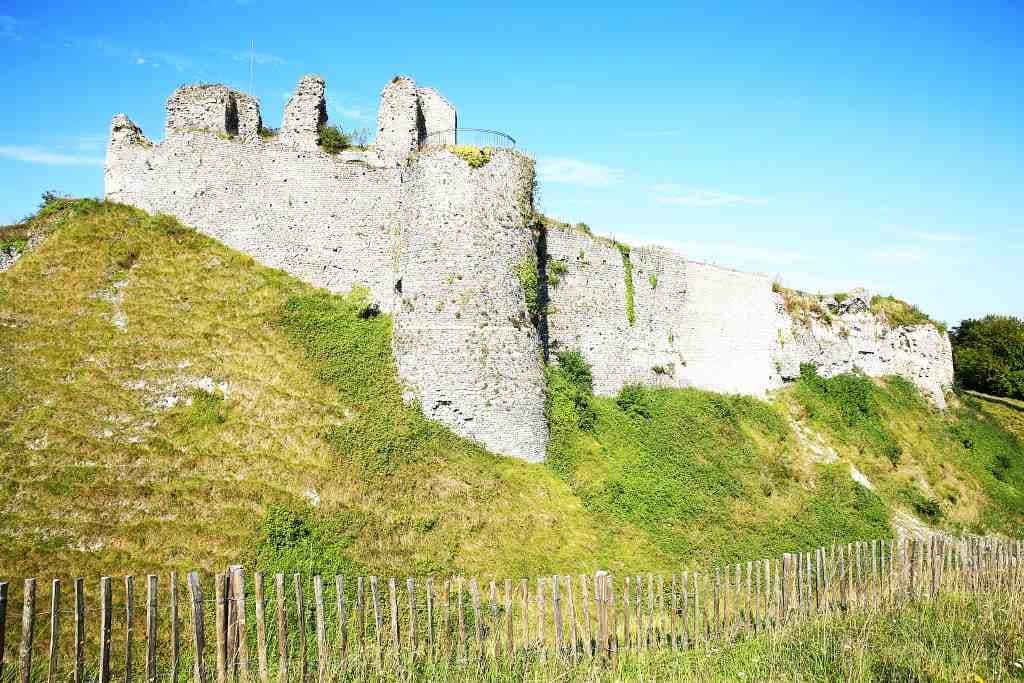
It was here that one of the most important battles in Norman history took place, but nowadays, it’s a bit of a hidden gem in the La Varenne Valley. It stands on a rocky outcrop, and there was a building here before the 12th-century structure.
Originally, the castle was intended for Count William of Talou, the uncle of William the Conqueror. Their relationship was not close though, and uncle deserted nephew in the middle of the Battle of Domfront in 1049.
Where: Arques-la-Bataille
When: 12th century
Open for Visit: No. The fortress is closed as the ruins are unstable. But you can view from outside!
9. Chateau de Colombières
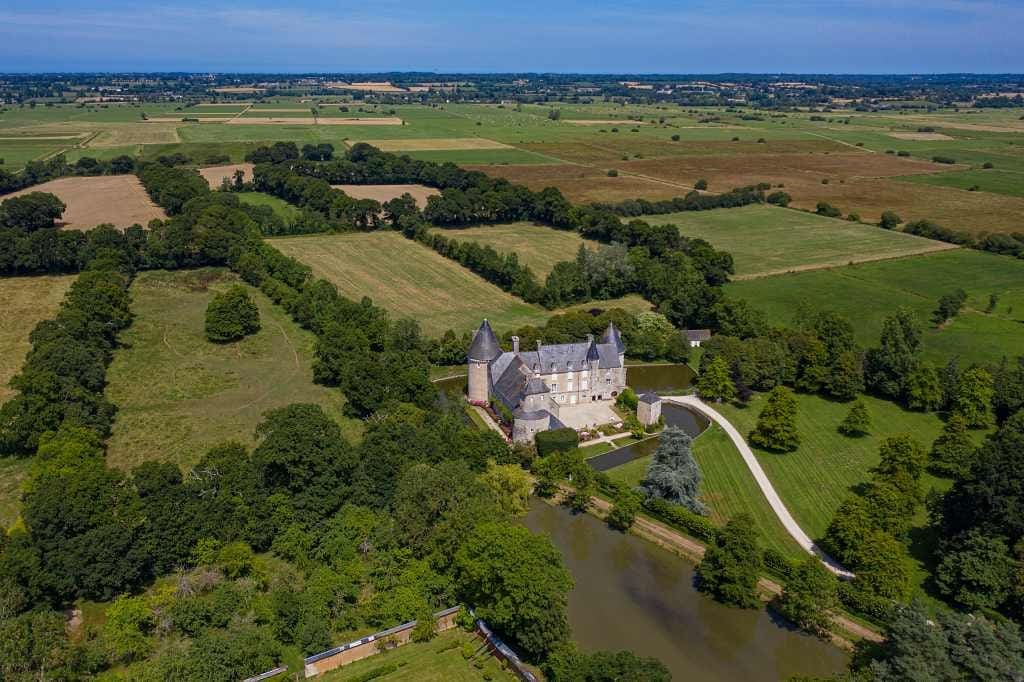
Hidden away in the Regional Natural Park of the Cotentin and Bessin Marshlands, Château de Colombières is known as the watchtower of the marshlands and played an essential role in World War II.
Its history goes way back though, with it being one of the most important and finest military fortresses during France’s feudal period. The 14th-century castle has a number of round towers, a moat, and beautifully kept gardens. Nowadays, you can stay overnight in the castle as it’s a bed and breakfast.
Where: Colombières
When: 14th century
Open for Visit: Yes. The castle is a bed and breakfast, but you can arrange a guided tour to see it and learn about its history. Check here for more information.
10. Château de Pirou

The Château de Pirou’s initial incarnation was a wooden castle, supposedly made by fairies – at least, according to legend. What is certain is that it was home to the Lords of Pirou. It is built upon an original Viking site and saw many sieges over the years.
The main part of the castle, which is built on an island, has been conserved. It is, in fact, a farm within five defensive gates. Since 1966, the castle has been being restored. Now you can visit and enjoy not only the castle itself but a gift shop selling local products.
Where: Pirou
When: 12th century
Open for Visit: Yes. Check here for more information.
11. Château de Saint-Sauveur-le-Vicomte
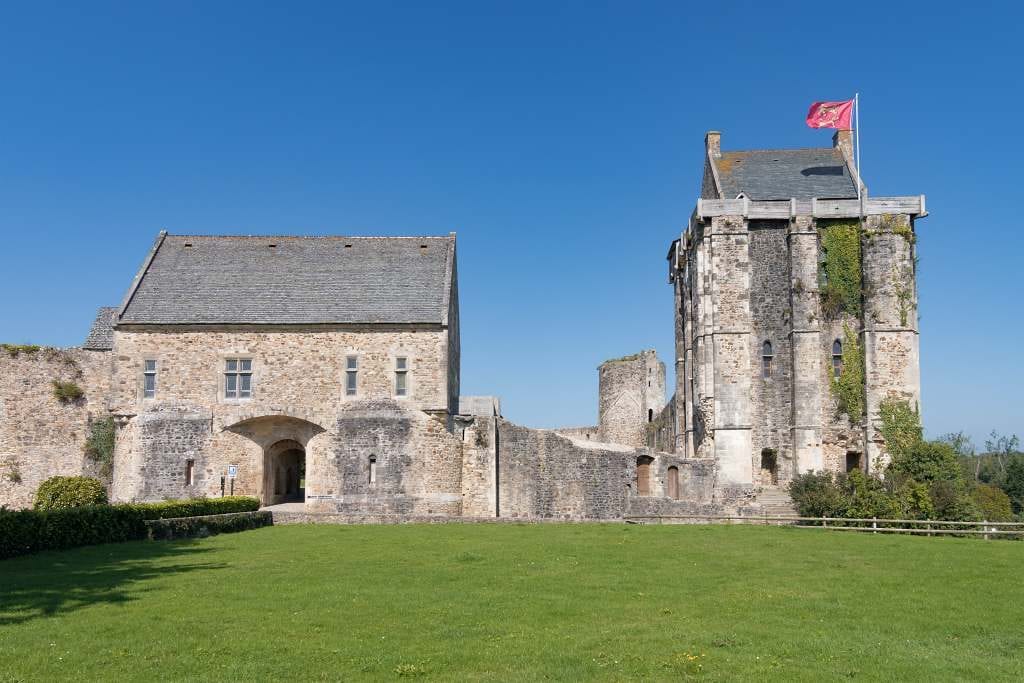
This imposing castle was besieged twice in the Hundred Years’ War, but it still retains much of the original structure. There is a fortified enclosure, 12th and 14th-century towers, and a dungeon.
It lies on the banks of the River Douve and has been listed as a French monument historique since the year 1840. The castle is located in the village of the same name.
Where: Saint-Sauveur-le-Vicomte
When: 11th and 12th centuries
Open for Visit: Yes. Check here for information.
12. Château de Carrouges
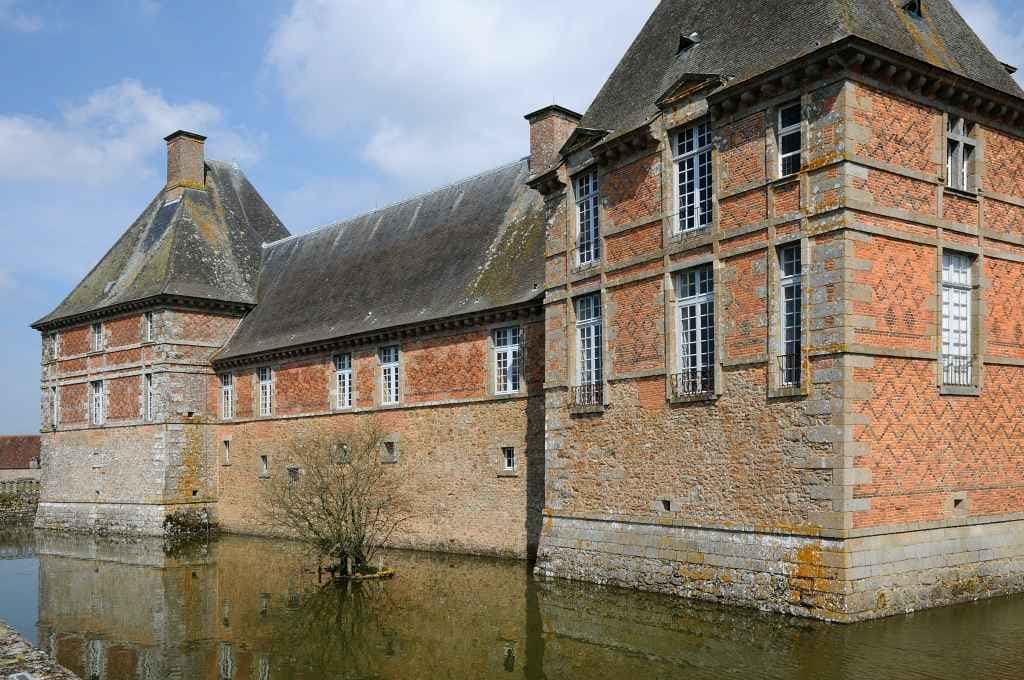
Built from brick, slate, and granite between the 14th and 17th centuries, Château de Carrouges lies in the heart of the Normandie-Maine Regional Nature Park. Unlike many of the medieval castles in Normandy, Carrouges is an example of French Renaissance architecture.
Inside, there is a Louis XI Chamber (which is where the king stayed for one night in the 15th century) and a Portraits salon with images of all the château’s owners.
Where: Carrouges
When: 14th century
Open for Visit: Yes. Click here for more information.
13. Château de Domfront
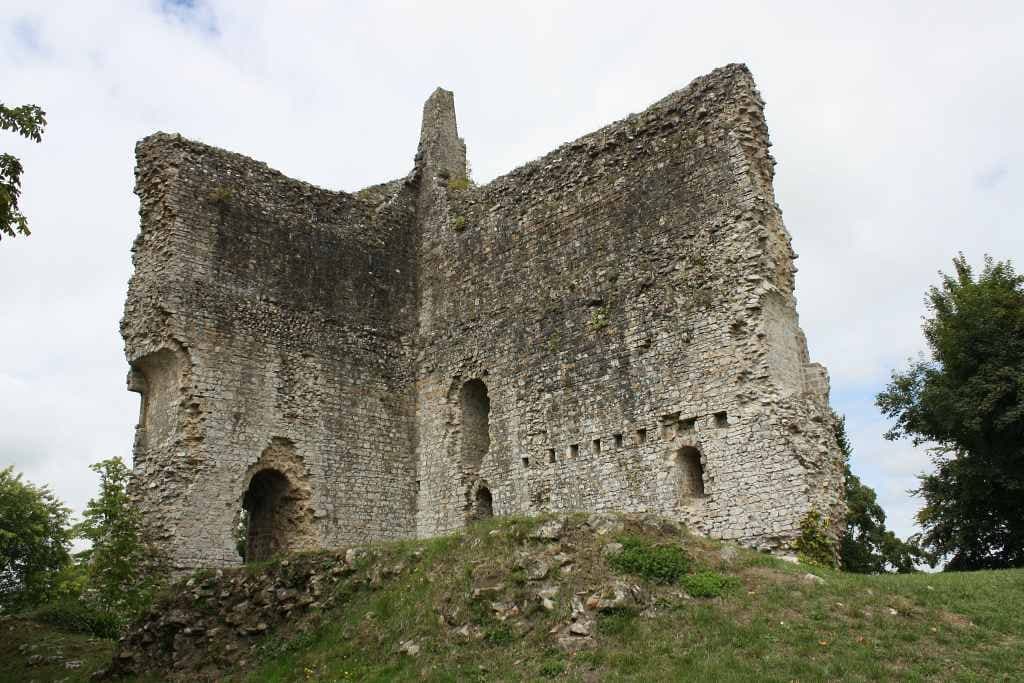
When strolling through one of the public parks of Domfront en Poiraie, it’s hard to imagine a medieval battle taking place there, but that’s exactly what happened in 1051 when it was besieged by William the Conqueror.
There has been a whole other castle built on the site since then, with the current vestiges dating back to the 12th century when it was built by Henry Beauclerc. What you can see are the remains of a keep and chapel.
Where: Domfront en Poiraie
When: 12th century
Open for Visit: Yes. The ruins are in a public park, and there is no entry fee.
14. Château de Dieppe
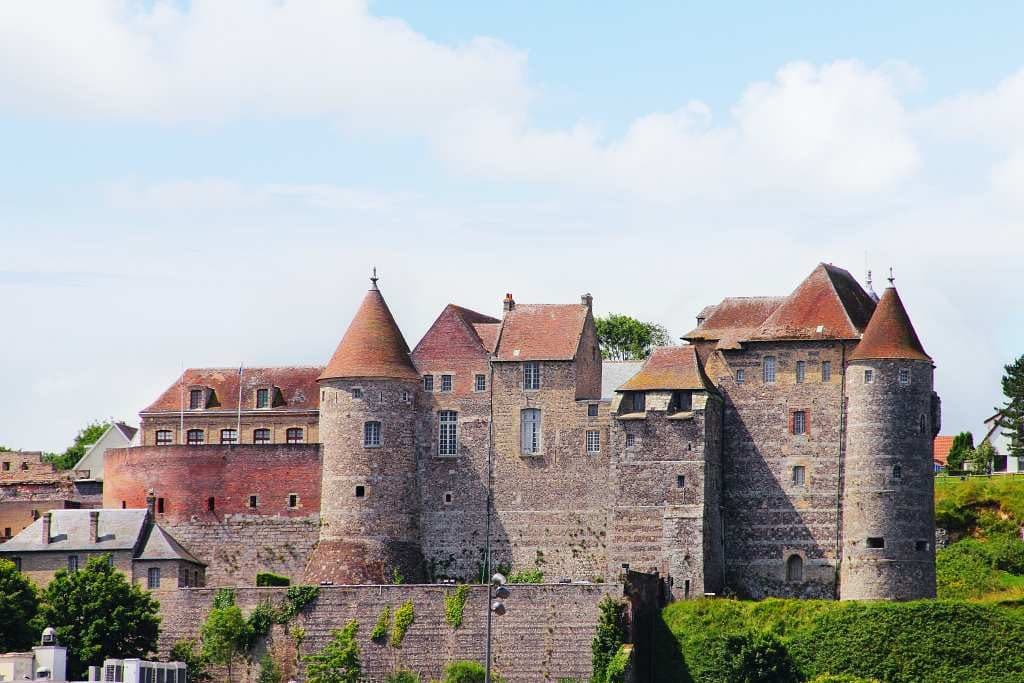
Now the museum of Dieppe, the city’s castle faces out to the English Channel and would have been one of the first lines of defence against invaders from the British Isles.
A castle was founded on the site in 1188 by King Henry II of England, but that was destroyed only seven years later. The current building dates back to the 14th century. As a museum, it holds furniture, art, and the largest collection of ivory in Europe.
Where: Dieppe
When: 14th century
Style: Several architectural styles
Open for Visit: Yes.
15. Μont Saint-Michel
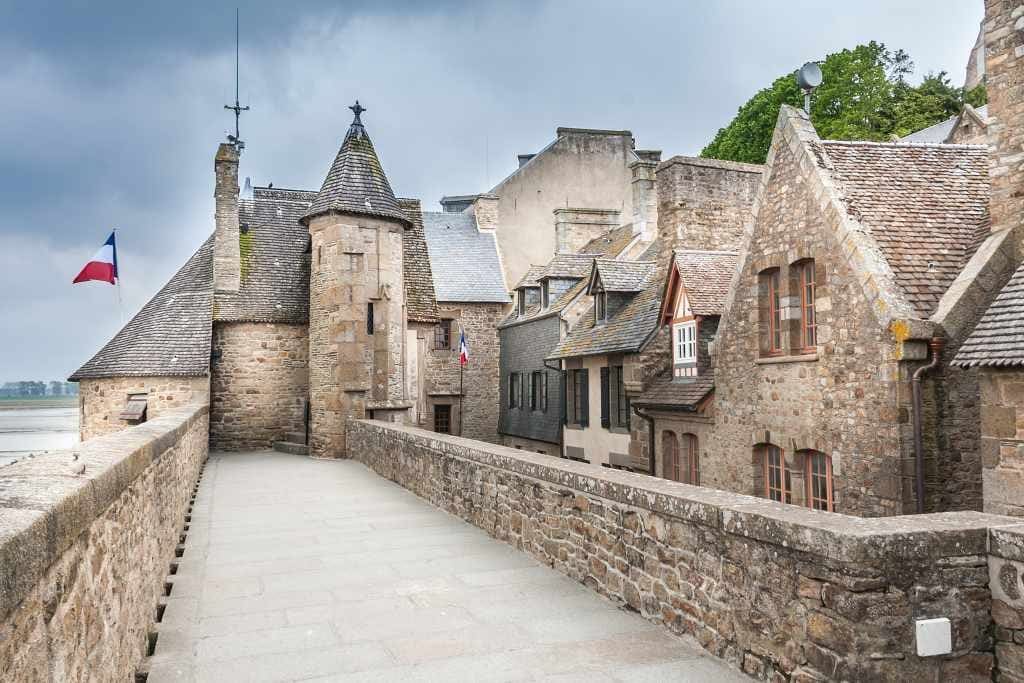
Although Mont Saint-Michel is not technically a castle, this fortified tidal island of the Normandy Coast is one of the most impressive sights in France.
The city dates back to the 13th century, but the monastery is around 500 years older. Visiting the island is one of the top things to do in Normandy; it’s easy to spend a day wandering around the village, which is like no other in the world!
Where: Avranches
When: 13th century
Style: Gothic
Open for Visit: Yes, but make sure to check the tides before crossing over.
